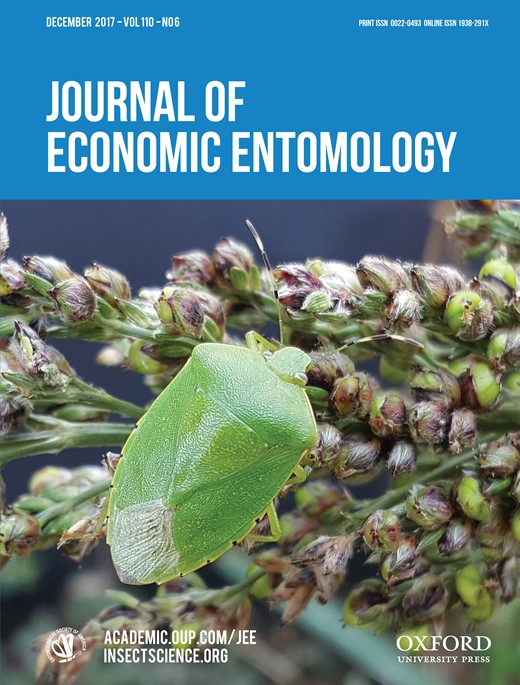-
Views
-
Cite
Cite
M Potrich, L F A Alves, E R Lozano, A K Bonini, P M O J Neves, Potential Side Effects of the Entomopathogenic Fungus Metarhizium anisopliae on the Egg Parasitoid Trichogramma pretiosum (Hymenoptera: Trichogrammatidae) Under Controlled Conditions, Journal of Economic Entomology, Volume 110, Issue 6, December 2017, Pages 2318–2324, https://doi.org/10.1093/jee/tox257
Close - Share Icon Share
Abstract
The purpose was to evaluate the side effects of strains Metarhizium anisopliae (Metsch.) Sorokin sensu lato Unioeste 43 and M. anisopliae sensu stricto ESALQ 1641 on Trichogramma pretiosum Riley (Hymenoptera: Trichogrammatidae) under controlled conditions. A free-choice test for parasitism was performed, with the confinement of T. pretiosum females mated with cards (1 × 5 cm) containing age-standardized Anagasta kuehniella Zeller eggs, either sprayed with a fungal strain (109 conidia/ml) or 0.01% v/v Tween 80 (control). For the no-choice tests, T. pretiosum females mated were confined with cards sprayed with fungal strains before or after parasitism, and cards with fungal applications at different times. The number of parasitized eggs, percentage of emergence, longevity, egg-to-adult period, sex ratio, total and confirmed mortality by the fungus, and longevity of females that parasitized previously sprayed eggs, were assessed. Histological analysis of immature phases was also performed. The fungus was repellent to T. pretiosum in the free-choice test, while in the no-choice test, fungal applications before and after parasitism did not affect the number of eggs parasitized by T. pretiosum or the sex ratio of emerging adults. However, both strains affected adult emergence rates, the egg-to-adult period, and longevity. Overall, both M. anisopliae strains had minor effects on these biological parameters of T. pretiosum under controlled conditions. Hyphae were not detected in histological observations of immature stages of the parasitoid.





